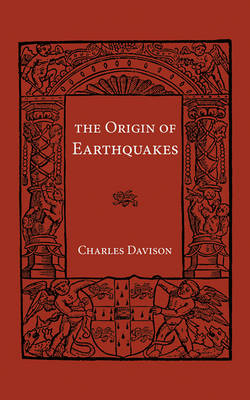
Origin of Earthquakes
Seiten
2009
Cambridge University Press (Verlag)
978-0-521-11221-5 (ISBN)
Cambridge University Press (Verlag)
978-0-521-11221-5 (ISBN)
Written in 1912 by the Cambridge scholar and mathematician Charles Davison, The Origin of Earthquakes offers an overview of what Davison described as 'the varied phenomena of earthquakes'. Using case studies from around the world, Davison considers the origin of several different classes of earthquakes, including simple, twin and complex. Further attention is devoted to the growth of faults, fore-shocks and after-shocks, sympathetic earthquakes, earthquake sounds and distribution, with supplementary illustrations and maps. Offering contemporary assessments of events ranging from the Mino-Owari earthquake of 1891 to the Californian earthquake of 1906, this volume will appeal to anyone interested in the history and development of seismology in the early part of the twentieth century.
1. The earthquake phenomena; 2. Earthquakes and the growth of faults; 3. Simple earthquakes and their origins: the Inverness earthquake of 1901; 4. Twin earthquakes and their origin: the Derby earthquakes of 1903 and 1904; 5. Complex earthquakes and their origin: the Californian earthquake of 1906; 6. Complex earthquakes and their origin (continued): The Mino-Owari earthquake of 1891; 7. Complex earthquakes and their origin (continued): The Assam earthquake of 1897; 8. Fore-shocks and their origin; 9. After-shocks and their origin; 10. Sympathetic earthquakes and their origin; 11. Earthquake-sounds and their origin; 12. Distribution of earthquakes; References; Index.
| Erscheint lt. Verlag | 4.6.2009 |
|---|---|
| Zusatzinfo | Worked examples or Exercises |
| Verlagsort | Cambridge |
| Sprache | englisch |
| Maße | 152 x 229 mm |
| Gewicht | 390 g |
| Themenwelt | Naturwissenschaften ► Geowissenschaften ► Geologie |
| Naturwissenschaften ► Geowissenschaften ► Geophysik | |
| ISBN-10 | 0-521-11221-4 / 0521112214 |
| ISBN-13 | 978-0-521-11221-5 / 9780521112215 |
| Zustand | Neuware |
| Informationen gemäß Produktsicherheitsverordnung (GPSR) | |
| Haben Sie eine Frage zum Produkt? |
Mehr entdecken
aus dem Bereich
aus dem Bereich
Baugruben und Gründungen
Buch | Hardcover (2024)
Springer Fachmedien Wiesbaden GmbH (Verlag)
CHF 83,95


